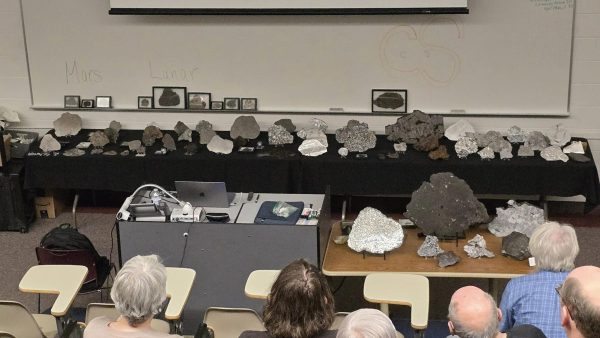Mineral Spotlight: Cinnabar
Cinnabar has been mined for thousands of years as it is the main ore of mercury. Its name is derived from the Arabic word “Zinjafr,” meaning dragon’s blood, appropriate given the mineral’s blood red color. Cinnabar historically has been used as the pigment vermillion, as a treatment for syphilis before the development of antibiotics and as a medical cure-all path to immortality (as it turns out, it does the opposite).
Elemental mercury is liquid at room temperature, and, when it is found in its native state, it occurs as metallic droplets associated with cinnabar. When cinnabar is heated, it excretes liquid mercury. Mercury fumes are highly toxic, and overexposure to mercury can cause impaired vision, hearing and speech, burning and itching sensations, as well a host of other unpleasant symptoms.
Today, although no longer used in medicine, mercury is still a very useful substance. It is used in thermometers and barometers, batteries, fluorescent lamps and in mining to separate precious metals from their ore bodies.
Cinnabar is a sulfide mineral with the chemical formula HgS, and is easily identified by its distinctive color, high specific gravity (8.2) and the environment in which it is found. Cinnabar forms in volcanic rocks and as the result of mercury precipitation out of low temperature hydrothermal fluids, usually in a hot springs setting.
Cinnabar usually occurs as grainy aggregates on a host rock and rarely forms crystals. But when crystals do form, the deep transparent red color and sharp crystal faces make cinnabar one of the most alluring minerals in the world. However, cinnabar would make a very poor gemstone as it is very soft — soft enough you can scratch it with your fingernail — and the mercury could pose a health hazard.
Come see our spectacular cinnabar crystals in our new sulfide mineral display case in the Dice Mineralogical Museum open 12:30 p.m. to 4 p.m. on Wednesdays, Thursdays and Fridays.






